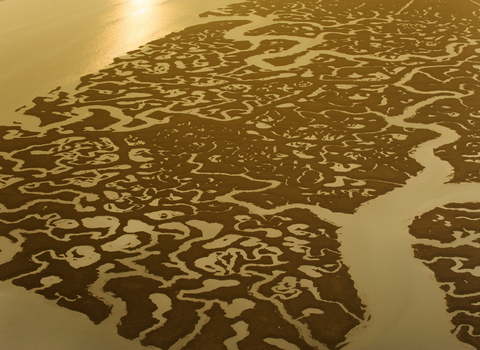What is Hinkley Point C?
Hinkley Point C (HPC) is a national infrastructure project to build two nuclear reactors in Somerset, England. The energy company EDF has been given permission to start the project. While EDF state this will “provide zero-carbon electricity for around six million homes” the project has raised various environmental and ecological concerns among stakeholders, particularly in terms of its impact on the Severn Estuary's unique habitats, biodiversity, and marine life.
What's happening?
Hinkley Point C was granted permission to proceed in 2013. EDF’s ongoing work to ensure appropriate environmental mitigation and compensation measures are a key part of the project development strategy. However, environmental groups including The Wildlife Trusts remain concerned, and have expressed a need for greater clarity and engagement. The Wildlife Trusts are particularly concerned about the risks to the marine ecosystem - in particular the impacts on the nursery habitat of migratory fish stocks in the Irish Sea and the freshwater river systems of England and of Wales.
The original design of HPC included 3 measures to protect fish populations from the impacts of the power station. These measures were researched and proposed by EDF to the competent authorities (Natural England, Planning Inspectorate, Somerset Council and the Environment Agency) to determine if they would sufficiently protect the environment as set out in the Habitat Regulations Assessments; a legal requirement for protected sites.
The Severn Estuary is both a SPA (Special Protection Area) and SAC (Special Area of Conservation) so is one of the most highly designated areas in the UK.
The proposed three methods were designed to work together (removal of one of these mitigation measures would reduce the efficiency of the other two):
- Low velocity side entry at the tunnel heads designed to allow fish to swim away and not be sucked into the cooling tunnels
- Fish recovery and return system
- Acoustic Fish Deterrent (AFD) using sound that deter fish from swimming too close to the intake pipes in the first place
In 2019, EDF proposed to remove the Acoustic Fish Deterrent as being difficult to install and maintain, claiming it was dangers for divers due to the high tidal range of the estuary. This went to public inquiry with environmental (eNGO) groups collectively giving evidence to support the Environment Agency (EA) in questioning EDF’s proposal.
In 2021, the UK Secretary of State for the Environment found in favour of the EA that the AFD should remain. EDF then proposed not to implement the AFD and instead a package of measures which they claimed would compensate for the loss of fish in the estuary, namely saltmarsh, oysterbeds, kelp forest and river work.
Whilst the eNGO group accepted that habitat restoration of saltmarsh, oyster beds, kelp forest and river work could make an important and positive impact on the estuary there was not enough evidence that it will address the huge losses of fish life that the cooling intakes without the AFD will cause.
The compensation approach required consultation with communities and landowners, which was done rapidly to meet planning deadlines, rushing engagement and alienating the very communities who would have been hosting the saltmarsh.
The latest news is that EDF has changed its mind and for now will not be seeking to build the saltmarsh and other compensatory habitats. Instead, they are exploring a different AFD technology which, if it works, will fulfil their original planning requirements whilst not needing divers to work in the dangerous estuary waters.
What needs to happen now?
There is no way of clearly knowing the full impact HPC will have on the Severn Estuary. It’s therefore crucial that the Government reaffirm the need for the Acoustic Fish Deterrent or equivalence in mitigation and compensation at a large scale. We are working to ensure the Planning Inspectorate recommends this action.
We also want to see a requirement put on EDF to consult fully with specialists and Statutory Agencies to find appropriate solutions for mitigation and compensation, which are designed and delivered to the highest standards for habitat creation and wildlife.
EDF must also be required to conduct proper consultation with communities to deliver the appropriate, agreed mitigation and compensation.
Somerset Wildlife Trust and its eNGO partners are now exploring:
- Information on whether the new AFD will provide sufficient mitigation
- Is additional compensation required?
- Is there anything else the environmental groups needs to do / say to get the best outcome for the habitats and wildlife of the estuary?
What’s at risk?
The Severn estuary has the highest levels of protections and designations in recognition of its significant species and habitats.
It is a RAMSAR site as a wetland of international importance. The intertidal areas are a Special Area of Conservation, supporting migratory fish species, and it is also a Special Protection Area for the important bird species that use the estuary to feed, breed, or seek refuge over winter.
There are also numerous Sites of Special Scientific Interest along the estuary.
The marine wildlife of the Severn Estuary is truly special. From the amazing rivers that feed into the estuary, to the birds that feed off the fish. Eels, Atlantic salmon and twaite shad are just a few of the many marine species found there.
Who are we working with?
Protecting an area that is so complex and diverse means that there is whole range of different environmental organisations and interest groups working in this landscape in a range of different specialist areas coming at the issue from different perspectives and aims. But what they all have in common are a desire to see this very special habitat and the wildlife that calls it home protected long into the future.
We are working with and are aligned with many of these groups’ ambitions. Our own focus is on our areas of expertise and working closely with others to bring a holistic overview to the discussions, on behalf of the environment.
Wildlife Trusts working on this issue are:
We are working with:
- Severn Environmental Interests Group
- Somerset Local Nature Partnership (SNLP)
- Severn Estuary Partnership (SEP) offering a neutral platform to explore shared interests, address concerns, and seek potential paths forward in a collaborative manner
What's all this about?
Find answers to some of the most frequently asked questions below.
What exactly is an Acoustic Fish Deterrent (AFD)?
An Acoustic Fish Deterrent (AFD) emits high frequency pulses to deter a wide range of fish species from entering the water inlets of the cooling system. When combined with a low-velocity side intake (intake positioned away from prevailing currents) and a fish recovery and return system, an AFD greatly reduces the number of fish that are sucked into the cooling process. This is particularly important in the Severn estuary where underwater visibility is low, due to high silt content and currents, and fish may not be aware of intakes until it is too late.
Does The Wildlife Trusts support nuclear energy?
As a movement, our views are that:
- Energy developments should be planned with the grid network as part of a national spatial strategy and their specific location informed by the local nature recovery strategy.
- All developments must be designed to provide ambitious net gains for nature.
- Energy developments and their associated infrastructure must not be sited directly on areas of existing high value wildlife habitat, within designated nature conservation sites or areas identified as high priority for restoration or where harm is likely to be caused to populations of vulnerable, threatened and endangered species.
Why is fish kill an issue?
The Severn estuary is designated as a Special Area of Conservation for its important habitats and species that are rare or threatened in Europe. This includes the migratory fish species river lamprey, sea lamprey, twaite and allis shad. All four species are listed as endangered on the IUCN red list of threatened species and are protected under UK law.
Historically, the Severn Estuary has been an important migratory corridor for both the sea lamprey and river lamprey. Today, the River Severn probably supports the largest populations of both in any river in northern Europe.
Migratory fish species face many challenges, including habitat degradation along their migration routes and the effects of a changing climate. The fish kill projections at Hinkley Point C, particularly in the absence of mitigation measures such as an AFD, are in the millions, which would significantly impact the endangered populations within the Severn Estuary.




